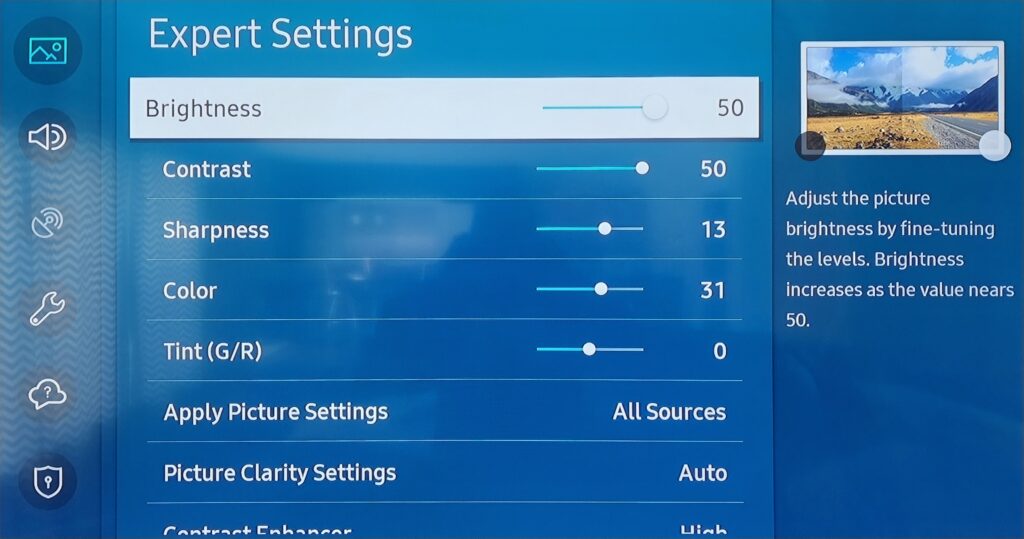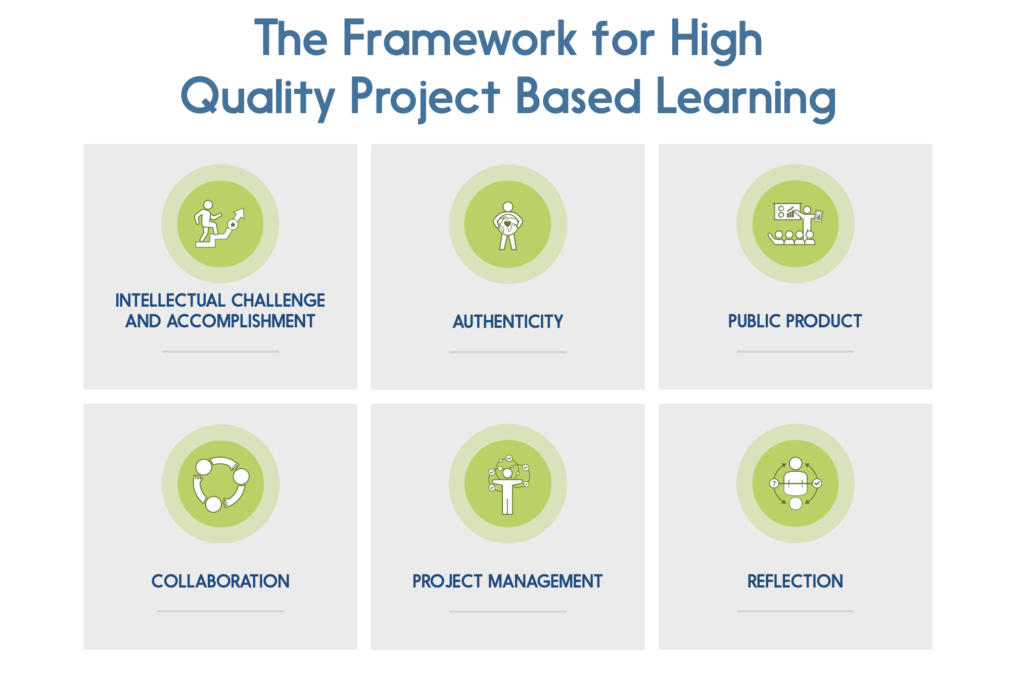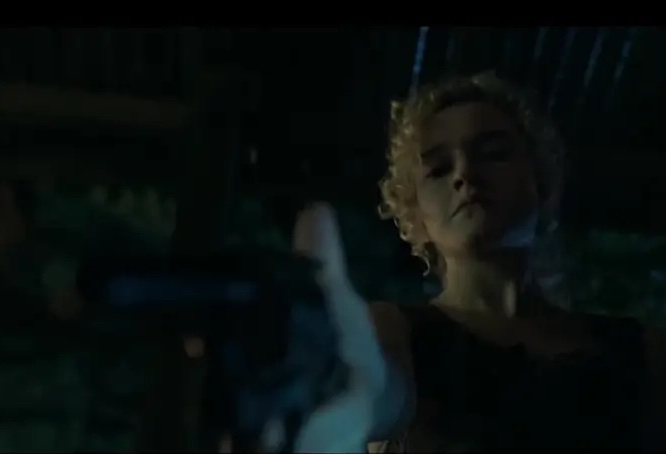Last year I was trying to watch Ozark on Netflix. The show is quite dark, and I could not tell what was happening. As it turns out, my daughter had messed with the TV settings for a show that she had been watching with her friends. Great for them, but it made my experience unwatchable.
So I had to play around with the settings until my TV show appeared as it was supposed to. It reminded me that sometimes we have to adjust what “ideal” PBL looks like to our classroom context.
I have been reflecting lately on what teaching with a Project Based Learning framework is actually like. Most teachers have so many curriculum and assessment mandates that shifting to PBL can seem overwhelming.
Add to that the SEL push since Covid, negative stories in the media, and in some places, attacks on teachers from the local community. Teaching is hard right now, and due to outside forces or interior stress you may be unable to fully implement PBL.
At its heart, Project Based Learning is a philosophical framework centered on students. PBL does NOT have to be an all or nothing endeavor. Here’s four TV analogies that realistically explain how to start PBL for the first time.
Adjust the Settings

In order to watch Ozark I had to go to the TV settings and adjust. I turned up the brightness a ton and the color a little bit. I didn’t mess with the sharpness or tint at all. If I turn up all of the settings to the highest level, they fight against each other and the picture is actually worse.
Project Based Learning works in a similar way. HQPBL lists six aspects for a high quality project. In an ideal world, every project that students did would excel in every area. But in reality, different projects are stronger in particular aspects. Projects do not need all of the settings set to high all of the time.

Once or twice a year I try to have a project that truly emphasizes all six aspects. The DQ is focused on a local issue, and students collaborate with the community to attack it. They present their solutions in a noticeably public forum. We turn it up to 11! These projects are some of the most impactful and memorable.
But neither the students nor myself can maintain the highest level of focus in every project all year long.
We would burn out. So on some projects we turn down some of the settings. We still have a DQ centered on inquiry, but may not have as flashy final product. Students still collaborate with each other in teams, but without a strong community connection. Students reflect on their learning, but our final presentations are in class only instead of a large production.
You may teach in a setting that has structural obstacles to high quality PBL. It may be mandated curriculum, class schedules, or required common assessments. It’s OK for you to skip aspects of PBL at times. Adjust the PBL settings so that they work for you and your students. The gradual philosophical shift to giving students more active voice in your room is more important than making sure that you hit every checkbox for high quality PBL.
Variety of Genres
I don’t like to watch the same type of shows all of the time. It depends on my mood. Sometimes I want an intense show that I have to focus on the plot lines so I choose a dystopian saga with multiple seasons, but sometimes I just want to relax with a light comedy.
Other times I watch reality TV, by which I mean live sports (not scripted, fake reality TV shows 🙂 March Madness is here and is my favorite TV show of the year! Sometimes I am busy planning for class or grading papers and I just have some science fiction fluff on as background noise that I am not really paying attention to.
It is nearly impossible to maintain enormous, high profile projects all year long. Mix in shorter ones with less grandeur for your own sanity, but for students’ sake too. Try to time the variety of projects to the rhythms of the school year, paying attention to upcoming breaks and longer stretches without any. Students can get fatigued from constant pressure of showcases and exhibitions.
The best TV settings depend on the genre that I am watching. Dystopian shows tend to be dark and brooding, whereas baseball or football games are outdoors in a light setting. If I leave the brightness up for an outdoor sporting event it can make it look washed out and overexposed.
Just as the genre of TV influences how to adjust for the ideal settings, the context of your classroom matters for how well you implement PBL. Some questions to consider:
- Is this your first attempt at PBL or have you been doing projects for years?
- What is your students’ experience level with PBL or similar student centered learning frameworks such as Montessori or Reggio Emilia?
- Do you have a community partner that needs a distinct problem addressed or specific final product?
- Do you have building level and district administrative support for PBL?
- Do you have professional freedom to change your curriculum and assessments or do you have mandates that must be followed?
The context of yourself, your students, your district, and your community greatly influences where to start with PBL. Even if you are a veteran PBL teacher, if it is new to your students and your district you will want to start small and gradually introduce them into the process.
If you feel that you may not have the support of your administration, ask for permission to pilot a project with your class. If finding a community partner is too much for you right not, have your students present to a younger or older group of students in your school. Maybe students will not be working outside your school at all for the project and that’s fine too.
As your students start to acclimate to the PBL philosophy you can give them more voice and choice over their projects and audiences. Other times, even with experienced PBL students, you may have a need for a specific final product for your client. This may limit student voice and choice but is highly authentic. Adjust your PBL projects to the genre or context of your school situation.
Closed Captioning
I like to watch TV with closed captioning on. My wife teases me about my hearing loss, due to my construction days, but apparently there are legitimate reasons why we all need to use closed captioning now more than ever.
Closed captioning was originally invented to help the hearing impaired community but so many other groups benefit including me. With the ubiquitous access to international films and TV, we now can watch programs in any language with subtitles. Many people around the world use subtitles to learn a new language. Closed captioning reminds me of the curb cut video that explains the universal benefits of scaffolding originally designed for a specific subset of individuals.
In PBL we encourage all students to use whatever scaffolding they need. Project Based Learning has been demonstrated to be an effective structure for diverse learners including English Learners, special education, and neurodivergent students.
Don’t be afraid to “turn on close captioning” with your students during PBL. We want independent problem-solvers, but we must first support students in developing the skills and mindsets to get there. PBL teachers provide templates, sentence stems, all forms of scaffolding, protocols, organization strategies, management tools, personalized coaching, and even direct instruction to help students meet their goals.
Binge Watching
A great PBL project is like binge watching your favorite show. I enjoy Ozark because it has a complex story that develops over multiple seasons with interesting characters and surprising plot twists. I wanted to keep watching it whenever I had free time and often stayed up too late on school nights to finish just one more episode.
When a project has structured inquiry that builds throughout, students stay engaged as they dive deeper and deeper into their learning. As they answer their need to know questions, they discover fresh new questions while considering multiple points of view. They get hooked into the story of the project.
In a compelling PBL project, students get into a state of flow and lose track of time. They are upset when class ends and want to keep problem solving. They work on the project at home, even when no homework is assigned. Students talk about the project with their friends and family. It shifts from a school assignment to something that they care about.
Not everyone enjoys binge watching the same kind of shows, and not every students gets as excited about every project. My goal, over the course of the year, is to try to connect each student to at least one project that they feel passionate about. Along the way, we focus on developing our SEL skills so that no matter what, students finish with personal growth in who they are.
Learn with me!
Are you interested in professional development for your school on how to implement PBL? I would love to have a conversation on how I can help. I am now scheduling summer workshops and book studies. Check out my workshop page or drop me an email at mikejkaechele@gmail.com. I would love to chat and co-plan meaningful PD for the educators at your school.
Would you like to explore more deeply how to integrate SEL into daily classroom activities? Check out my book below for tons of practical ways that can be immediately implemented in any classroom.
Pulse of PBL



Pingback: Sharing Diigo Links and Resources (weekly) | Another EducatorAl Blog